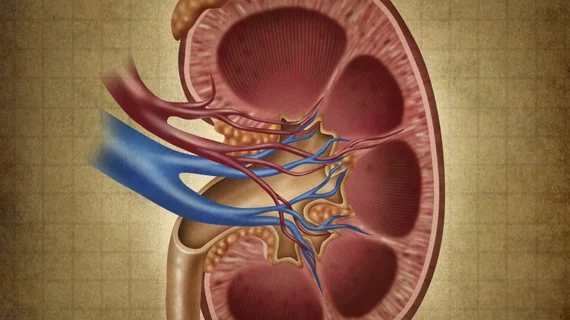No evidence IV contrast causes renal damage in patients with kidney disease, study finds
A new study found that chronic kidney disease (CKD) patients who received IV contrast-enhanced imaging faced no more risk of developing contrast-induced nephropathy than those who did not receive contrast material.
Contrast material (CM) is commonly used in imaging studies and is safe in those with normal renal function—typically required for a patient to be included in a clinical trial, wrote first author Yen-Chien Lee, in the Aug. 6 study published in the American Journal of Roentgenology.
“However, some subgroups of patients with poor renal function might still require imaging with CM,” the authors added. “Thus, we cannot avoid the use of CM in general practice for patients with poor renal function as well as in clinical trials, cardiovascular surgery evaluation, or cerebral intervention.”
Lee, with Tainan Hospital’s Department of Oncology in Taiwan, and colleagues wondered if poor renal function is a risk factor for contrast-induced nephropathy (CIN), noting that prior research hasn’t included proper control groups.
The team reviewed six studies that analyzed the development of CIN after contrast-enhanced CT compared with its development after unenhanced CT. In total, 55,963 patients were included; all literature involved patients with CKD and a proper control group as well as studies that performed CM administration via IV.
Overall, the researchers found that IV infusion of CM didn’t lead to worsening renal function in patients with CKD compared to those without the condition. And all analyses showed similar odds ratios for CIN between patients who received IV injection of CM and those who did not.
Additionally, a subgroup analysis found no difference with a decreasing estimated glomerular filtration rate (eGFR), which is used to check how well kidneys are working by estimating how much blood passes through the organ’s filters each minute.
“On the basis of currently available retrospective cohort studies, the risk of CIN developing is minimal among patients undergoing routine CT studies,” the authors wrote.

